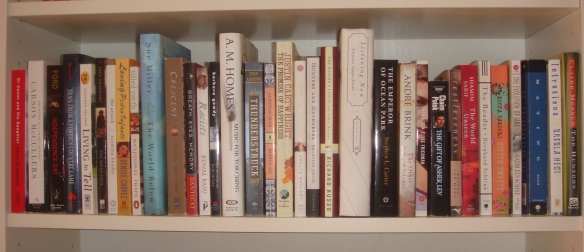 Whether it’s about Iwo Jima or orcs and elves, writing on war depresses and bores me. Perhaps my brain lacks the plumbing that’d enable me comprehend, let alone appreciate, details of military manoeuvres? All I know: I finished Cold Mountain in twenty minutes.
Whether it’s about Iwo Jima or orcs and elves, writing on war depresses and bores me. Perhaps my brain lacks the plumbing that’d enable me comprehend, let alone appreciate, details of military manoeuvres? All I know: I finished Cold Mountain in twenty minutes.
Pat Barker’s Life Class, while not quite overhauling my prejudices, has given me much pause. The blurb tells us that the book features a triangle consisting of three art students’ “intriguing” love for each other. The real triangle, however, is the odd geometry created by the intersection of art, medicine and war.
Barker writes about the First World War on an intensely personal level; you’d think she’d been floundering in a mucky trench ducking enemy fire even as she recorded the moment on her Handycam. Since there is no omniscient narrator reciting historical details that rightfully belong in a Wikipedia entry, I wasn’t tempted to skip a single paragraph, not even the one about severed limbs and gas gangrene smells. It helps that Barker’s prose never deviates from the scrupulously elegant. It’s as though this author wields an emery board instead of a pen—there isn’t a single rough edge to be found in her writing. Really.
Life Class opens with a superb scene at the Slade School of Art in 1914. Barker introduces the real-life figure of Henry Tonks, the surgeon and professor of anatomy who taught students how to draw the human body. The writing is vivid and exciting, bringing alive the steamy room with its coal stove and plumes of smoke, the scathing, brilliant teacher and his tremulous students. Among those students are Neville, a wealthy Londoner, Elinor, daughter of a prosperous doctor, and Paul, a working-class youth from Yorkshire, whose grandmother’s legacy has enabled his education. The class tensions steam off the page even as Paul and Neville compete in a discreet, playing-fields-of-Eton way for the beautiful Elinor’s attentions.
Should art transcend daily life, question it, or objectively record it? An old question, but one that takes on an urgent significance during wartime, and Barker’s characters embody the different dimensions art assumes at moments of crisis. Paul joins the Belgian Red Cross as an orderly and is pitchforked into the thick of the things at Ypres. Elinor, however, remains at the Slade. Believing that the proper subject for art is the things she chooses to love, she resolutely draws landscapes and attends parties as part of the Bloomsbury crowd. Neville, however, travels to the war-front with the express intent of painting battle scenes, and his art is a huge success in London.
Barker explores the role of art during war-time with precision and depth—her sweep includes the propaganda British posters that show women raped, and their breasts being hacked off by enemy soldiers. As one of the characters remarks “…it’s difficult to persuade young men to lay down their lives to preserve the balance of power in Europe. Some other cause had to be found… Pretty young girls with their blouses ripped off did the trick nicely.”
Apart from a brief mention, however, Barker does not revisit the character of Tonks in the story—an unfortunate omission, for Tonks is probably the most interesting figure in the book. The author does inform us in the afterword that the professor went back to medicine during the war, drawing portraits of facially mutilated patients to aid in reconstructive surgery, but those scant facts hardly do justice to his story.
And what of the ballad of Paul and Elinor and Neville? That brings me to my chief grouse with the book. The love triangle breaks down rather perfunctorily into “two twigs being swept along on a fast current”; the third twig has long deteriorated into mush. This ending felt so abrupt and unsatisfactory that I checked whether my review copy was missing a couple of pages (nix). I was left wondering if Barker plans a sequel, in which case all is well with my literary world. But if there’s no sequel—well then, Barker, you’ve made me swear off war novels forever.
(This review appears in the current issue of Eclectica.)












